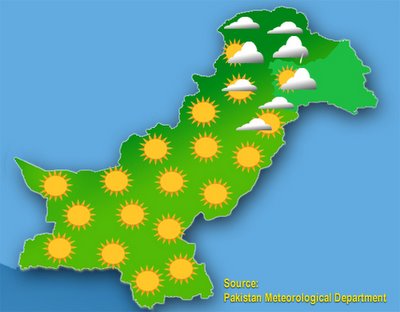Learning from Earthquakes
First Report on the Kashmir Earthquake of October 8, 2005
Overview
On October 8, 2005, at 08:50 am local time, a Mw7.6 earthquake struck the Kashmiri region of Paki-stan and India, causing widespread destruction in Pakistan’s Azad Jum-mu and Kashmir (AJK) and North-west Frontier Provinces (NWFP), and in India’s western and southern Kashmir—an area of 30,000 km2(see Figure 1). This was the dead-liest earthquake in the recent his-tory of the sub-continent, with more than 80,000 fatalities, 200,000 peo-ple injured, and more than 4 million people left homeless.
The epicenter of the main earth-quake was located at latitude 34° 29′ 35″ N and longitude 73° 37′ 44″ E, and the focal depth was determined to be 26 km (USGS). The main shock was followed by
more than 978 aftershocks of mag-nitude Mw 4.0 and above, until October 27, 2005. This earthquake is associated with the known sub-duction zone of an active thrust fault in the area where the Eurasian and Indian tectonic plates are collid-ing and moving northward at a rate of40 mm/yr, giving rise to the Himalay-an mountain ranges. Almost all thebuildings—mainly stone and block masonry laid in cement sand mor-tar—collapsed in areas close to the
epicenter. Up to 25 km from the epi-center, nearly 25% of the buildings collapsed, and 50% of the buildings were severely damaged.
The major affected towns in Pakistan were Muzaffarabad, Bagh, Rawlakot and Balakot. In addition, Islamabad, Shinkiari, Batagram, Mansehra, Abbotabad, and Murree were dam-aged. Initial rescue and relief efforts were hampered by the mountainous terrain, bad weather, and damaged or collapsed infrastructure.
Government agencies and NGOs are racing against the weather to deliver relief supplies and temporary housing to remote areas before winter sets in. Several EERI members visited the region shortly after the earthquake and sent back initial reports.
PAKISTAN
Authors contributing to this section were Dr. A. Naeem, Dr. Qaisar Ali, Muhammad Javed, Zakir Hussain, Amjad Naseer, Syed Muhammad Ali, Irshad Ahmed, and Muhammad Ashraf of the Earthquake Engineer-ing Center in the Department of
Civil Engineering, N-W.F.P. Univer-sity of Engineering and Technology (UET), Peshawar, Pakistan, and Charles Scawthorn of Kyoto Univer-sity, Japan. The publication of thisreport is funded by EERI’s Learning from Earthquakes Program, under National Science Foundation grant # CMS-0131895.
The epicentral area is a very rug-ged mountainous area with deep narrow valleys and relief of 5,000 or more feet and slopes of 45-50 de-grees. A large number of smaller settlements and houses are on valley walls, right up to ridge tops. Muzaffarabad—about 10 km south-west of the epicenter—is the largest city in the region, with a population of about 200,000, and was severely damaged (see Figure 2). Pakistan reports more than 72,000 people dead, and 2.8 million displaced.
Ground Motions
Shaking intensity: Based on obser-vations of buildings and infrastruc-ture, team members estimate MMI
X+ in Balakot, MMI VIII-IX in Muzaf-farabad, and MMI VII-VIII in other locations south of Muzaffarabad.
Liquefaction: None was observed, and it doesn’t appear to have oc-curred to any significant degree, probably due to a low water table in this arid region, as well as to alluvial deposits being generally coarsely
graded (due to steepness of stream beds).
Landslides: There were numerous
landslides, generally minor to moder-
ate but massive in some instances, causing some deaths and injuries and blocking roads. A dramatic but surficial landslide occurred on the moutainside to the north of Muzaffarabad (Figure 3). It should be noted there was evidence of similar pre-earthquake slides in the same area.
A massive landslide about 40 km SE of the epicenter appears to be a failure of an entire valley wall perhaps 5,000 feet high (Figure 4).
Debris flowed down and across thevalley, damming it with a crest ap-proximately 2 km in length. The scale of this slide is analogous to the 1959 Hebgen Lake (Montana)
slide. The slide warrants further investigation.


